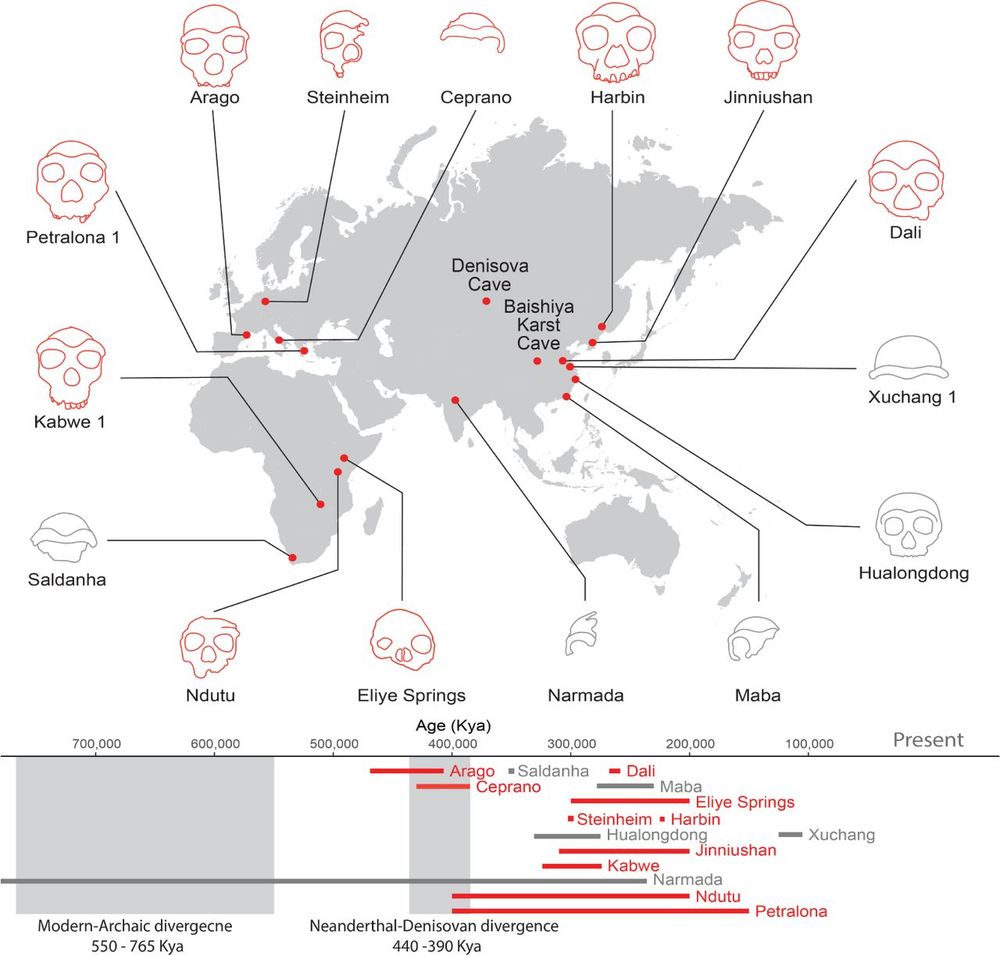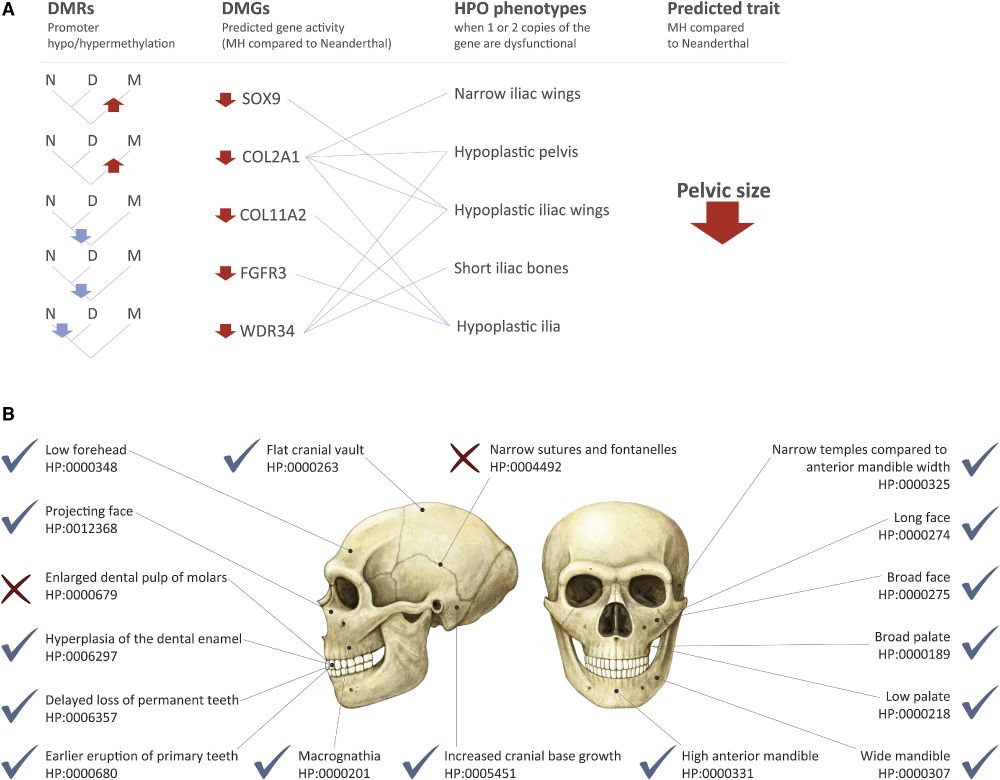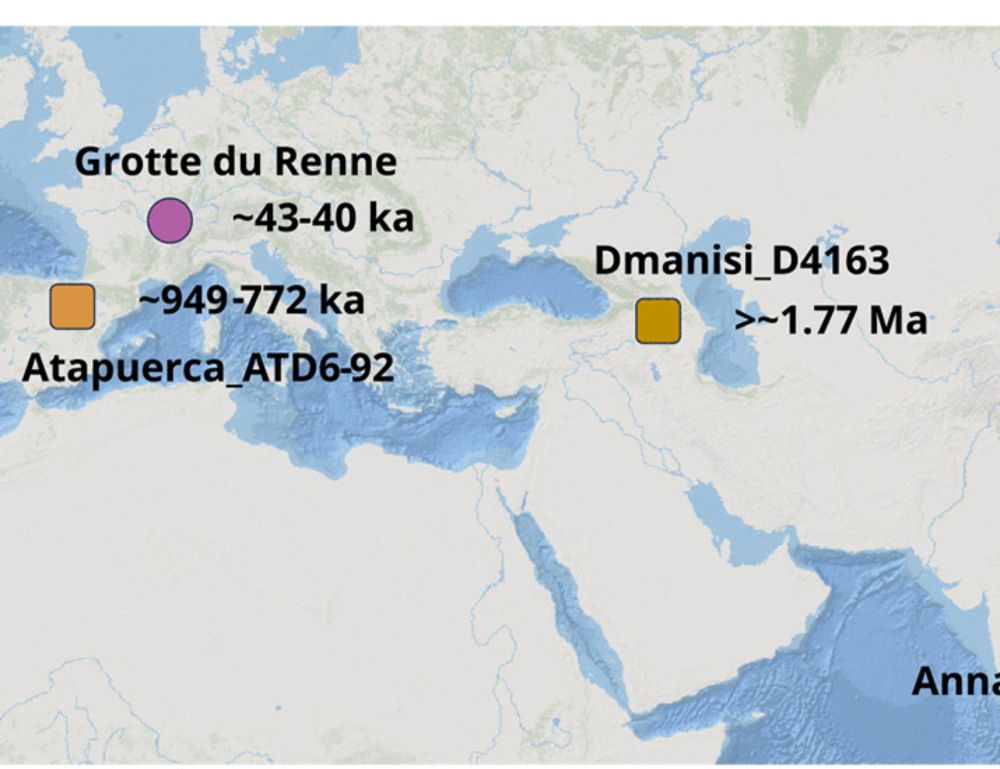
David Gokhman
@david-gokhman.bsky.social
Asst Prof @WeizmannScience. Exploring human evolution through the lens of gene regulation🧬 Still rooting for Neanderthals & Denisovans💀❤️ gokhmanlab.com
It was a true pleasure to work on this with @nadavmishol.bsky.social, @lirancarmel.bsky.social
, Gadi Herzlinger, Uzy Smilansky, and Yoel Rak
, Gadi Herzlinger, Uzy Smilansky, and Yoel Rak
August 27, 2025 at 1:05 PM
It was a true pleasure to work on this with @nadavmishol.bsky.social, @lirancarmel.bsky.social
, Gadi Herzlinger, Uzy Smilansky, and Yoel Rak
, Gadi Herzlinger, Uzy Smilansky, and Yoel Rak
Our approach was based on gene regulatory phenotyping, which predicts the direction, rather than magnitude, of phenotypic difference - a much more attainable goal. If you're interested in why and how this approach works, see: www.nature.com/articles/s41...

Predicting the direction of phenotypic difference - Nature Communications
Here authors reveal a method to predict key information on phenotypes - their direction. This is achievable even for phenotypes with incomplete genotype-to-phenotype mapping, and applicable for indivi...
www.nature.com
August 27, 2025 at 1:05 PM
Our approach was based on gene regulatory phenotyping, which predicts the direction, rather than magnitude, of phenotypic difference - a much more attainable goal. If you're interested in why and how this approach works, see: www.nature.com/articles/s41...
This approach opens a new way to connect genetics & fossils, helping classify debated human remains and refine our evolutionary tree.
August 27, 2025 at 1:05 PM
This approach opens a new way to connect genetics & fossils, helping classify debated human remains and refine our evolutionary tree.
Overall, we suggest that substantially more phenotypic information can be inferred from genetic data than previously appreciated. Had a great time working on this with @gilig.bsky.social @shaicarmi.bsky.social and Keith Harris
July 26, 2025 at 5:14 PM
Overall, we suggest that substantially more phenotypic information can be inferred from genetic data than previously appreciated. Had a great time working on this with @gilig.bsky.social @shaicarmi.bsky.social and Keith Harris
Importantly, unlike quantitative phenotypic predictions (e.g., based on polygenic scores), we show that our qualitative approach circumvents one of the biggest problems in population genetics – the limited transferability of genotype-phenotype association data across populations
July 26, 2025 at 5:14 PM
Importantly, unlike quantitative phenotypic predictions (e.g., based on polygenic scores), we show that our qualitative approach circumvents one of the biggest problems in population genetics – the limited transferability of genotype-phenotype association data across populations
This estimator can be applied to comparisons of individuals from the same family, same population, different populations, or even different species
July 26, 2025 at 5:14 PM
This estimator can be applied to comparisons of individuals from the same family, same population, different populations, or even different species
Our method works even when genotype-to-phenotype information is limited. For example, we show that even in phenotypes where known SNPs explain only 3% of phenotypic variation, you can often predict with >90% accuracy who has the higher phenotypic value
July 26, 2025 at 5:14 PM
Our method works even when genotype-to-phenotype information is limited. For example, we show that even in phenotypes where known SNPs explain only 3% of phenotypic variation, you can often predict with >90% accuracy who has the higher phenotypic value
For additional specimens we think likely belong to Denisovans, see Nadav Mishol's beautiful preprint, in collaboration with
@lirancarmel.bsky.social www.biorxiv.org/content/10.1...
@lirancarmel.bsky.social www.biorxiv.org/content/10.1...

June 20, 2025 at 10:33 AM
For additional specimens we think likely belong to Denisovans, see Nadav Mishol's beautiful preprint, in collaboration with
@lirancarmel.bsky.social www.biorxiv.org/content/10.1...
@lirancarmel.bsky.social www.biorxiv.org/content/10.1...
Although a Denisovan pinky bone has been discovered, testing our pinky-related prediction also requires the proximal and intermediate phalanges. Once those are found, we’ll also be able to test whether Denisovan phalanges exhibit the predicted tapering from proximal to distal
June 20, 2025 at 10:33 AM
Although a Denisovan pinky bone has been discovered, testing our pinky-related prediction also requires the proximal and intermediate phalanges. Once those are found, we’ll also be able to test whether Denisovan phalanges exhibit the predicted tapering from proximal to distal
Our approach was based on gene regulatory phenotyping, which predicts the direction, rather than magnitude, of phenotypic difference - a much more attainable goal. If you're interested in why and how this approach works, see: www.biorxiv.org/content/10.1...
www.biorxiv.org
June 20, 2025 at 10:33 AM
Our approach was based on gene regulatory phenotyping, which predicts the direction, rather than magnitude, of phenotypic difference - a much more attainable goal. If you're interested in why and how this approach works, see: www.biorxiv.org/content/10.1...
Interestingly, our Denisovan trait prediction accuracy now stands at 89% - matching the accuracy we estimated using Neanderthal and chimpanzee data. Always nice when the model does what it says on the tin.

June 20, 2025 at 10:33 AM
Interestingly, our Denisovan trait prediction accuracy now stands at 89% - matching the accuracy we estimated using Neanderthal and chimpanzee data. Always nice when the model does what it says on the tin.
Overall 25/28 of our predictions have been confirmed. Not too shabby for profiling an extinct species from DNA methylation maps!
June 20, 2025 at 10:33 AM
Overall 25/28 of our predictions have been confirmed. Not too shabby for profiling an extinct species from DNA methylation maps!
And the first genetic evidence supporting this was posted last year: www.biorxiv.org/content/10.1...
www.biorxiv.org
June 18, 2025 at 6:42 PM
And the first genetic evidence supporting this was posted last year: www.biorxiv.org/content/10.1...
First genetic evidence that Harbin was likely a Denisovan was here: www.biorxiv.org/content/10.1...
www.biorxiv.org
June 18, 2025 at 6:26 PM
First genetic evidence that Harbin was likely a Denisovan was here: www.biorxiv.org/content/10.1...
It is! And yes, we’re going to have brain-related data soon and I’m super curious to see if the variants we report played a role in human brain evo too!
May 7, 2025 at 8:22 PM
It is! And yes, we’re going to have brain-related data soon and I’m super curious to see if the variants we report played a role in human brain evo too!
Find out about other potential Denisovan specimens here, in a beautiful work led by Nadav Mishol: www.biorxiv.org/content/10.1... @lirancarmel.bsky.social

April 18, 2025 at 4:28 PM
Find out about other potential Denisovan specimens here, in a beautiful work led by Nadav Mishol: www.biorxiv.org/content/10.1... @lirancarmel.bsky.social
A common mistake when evaluating the profile is normalizing features (e.g., by breadth). But since the profile includes independent predictions affecting length, height, and breadth, normalization cancels out key signals. Absolute values are the way to go here, and they align with our predictions.
April 18, 2025 at 4:28 PM
A common mistake when evaluating the profile is normalizing features (e.g., by breadth). But since the profile includes independent predictions affecting length, height, and breadth, normalization cancels out key signals. Absolute values are the way to go here, and they align with our predictions.


